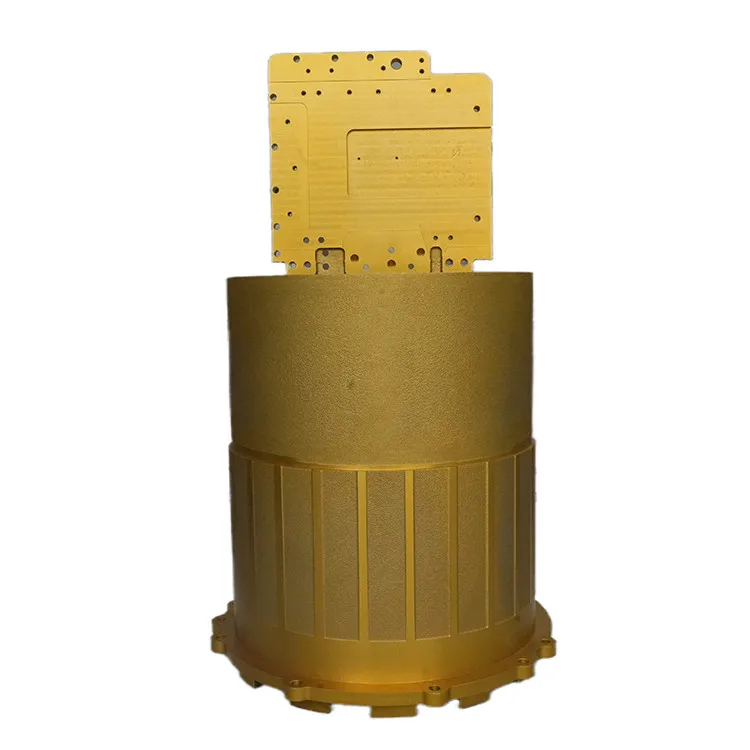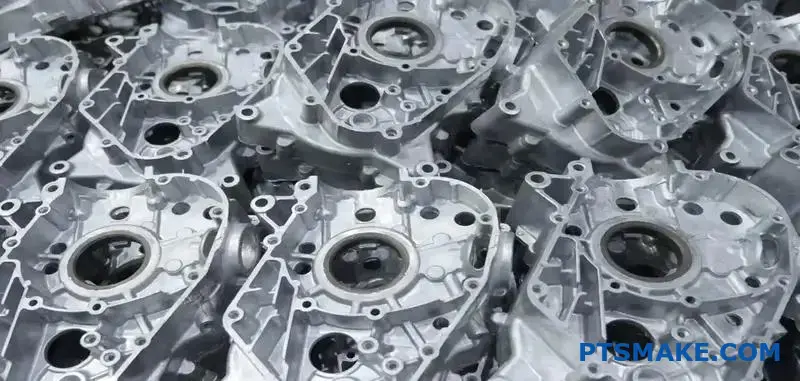Aluminum Casting Explained: Key Truths and Insights for Sector Professionals
Aluminum casting acts as a crucial procedure in modern production, forming parts across different fields. Its diverse techniques, such as sand and die casting, provide to various production requirements. The unique buildings of aluminum alloys enhance their applicability, yet challenges continue to be in keeping quality and efficiency. Recognizing these aspects is essential for industry professionals. What are the current developments and finest practices that can further maximize this procedure?
Overview of Aluminum Casting Processes

Trick components of aluminum casting procedures consist of the prep work of molds, which might be made from sand, steel, or ceramic materials, depending upon the intended usage. Additionally, temperature level control is critical to assure proper melting and solidification of aluminum.
The casting process permits for intricate designs and can achieve high degrees of dimensional accuracy. As soon as cooled, the castings may undertake finishing operations such as machining or surface therapy to meet particular efficiency standards. In general, aluminum casting functions as a versatile manufacturing strategy, effectively fulfilling the varied needs of numerous markets.
Kinds Of Aluminum Casting Techniques
In the domain name of aluminum casting, different approaches are employed to accomplish various outcomes. Sand casting methods give versatility and cost-effectiveness for intricate shapes, while die casting procedures supply high precision and performance for mass production. Recognizing these approaches is crucial for picking the appropriate technique based upon job demands.
Sand Casting Strategies
Sand casting strategies stand for a basic approach in aluminum casting, where sand is made use of as a mold product to form liquified steel. This process includes producing a pattern from the wanted part, which is then put in a sand combination to form a mold and mildew. The sand is compacted around the pattern, and after removal, it produces a dental caries in the shape of the part. Molten aluminum is poured right into this dental caries, allowing it to cool and solidify. One considerable benefit of sand casting is its convenience; it can suit complex shapes and large components. Additionally, the materials utilized are fairly inexpensive, making it an easily accessible choice for different production applications in the aluminum sector.
Die Casting Processes
Die casting procedures are a prominent method for shaping aluminum elements, using high-pressure methods to require molten metal into specifically engineered molds. This process is especially preferred for its capability to produce intricate forms with limited resistances and a smooth surface. There are two key sorts of die casting: warm chamber and chilly chamber. Hot chamber die casting appropriates for steels with low melting points, enabling faster production rates. Conversely, chilly chamber die casting is optimal for higher melting point metals, requiring a different melting heater. Both techniques improve efficiency and lower material waste, making them vital in automotive, aerospace, and durable goods industries. Recognizing these procedures helps specialists choose the most ideal technique for their specific applications.
Material Characteristic of Aluminum Alloys

Toughness and Durability
Stamina and longevity are essential characteristics of aluminum alloys that make them appropriate for numerous casting applications. These products exhibit a favorable strength-to-weight ratio, enabling the development of light-weight yet robust components. With regard to tensile stamina, certain aluminum alloys can be crafted to stand up to substantial lots without flawing. This building is particularly important in industries such as aerospace and automotive, where performance and safety and security are paramount. In addition, aluminum alloys often preserve their mechanical homes under diverse temperature conditions, ensuring consistent efficiency. The inherent ductility of these alloys likewise enables effective shaping during the casting procedure, making it less complicated to generate complex geometries. Generally, the stamina and toughness of aluminum alloys contribute considerably to their extensive use in advanced applications.
Deterioration Resistance Characteristics
While aluminum alloys are treasured for their stamina have a peek at this site and lightweight residential or commercial properties, their corrosion resistance is one more important characteristic that boosts their suitability for various applications. Aluminum normally forms a safety oxide layer when exposed to dampness, which assists to avoid additional oxidation. This intrinsic home makes aluminum alloys especially important in settings susceptible to corrosion, such as commercial and marine setups. Additionally, various alloy compositions can affect resistance degrees, with certain alloys especially engineered to improve this particular. Treatments like plating can better boost rust resistance by enlarging the oxide layer. Subsequently, recognizing the deterioration resistance of aluminum alloys is vital for sector professionals when selecting materials for tasks needing longevity and longevity in tough atmospheres.
Advantages of Aluminum Casting in Manufacturing
Aluminum casting offers many advantages in manufacturing, making it a recommended selection for various markets. One considerable advantage is its light-weight nature, which adds to decreased transportation costs and enhanced energy performance in output. Aluminum's exceptional thermal and electrical conductivity enhances functionality in applications requiring heat dissipation or electric transmission.
The product's ability to be cast into detailed forms enables design adaptability, minimizing the demand for extra machining processes. Furthermore, aluminum casting shows superior deterioration resistance, leading to longer product life-spans and reduced upkeep expenses.

Common Applications of Aluminum Castings
The adaptability of aluminum casting allows its widespread usage throughout various industries. Usual applications include automotive components, where light-weight and corrosion-resistant parts, such as engine blocks and transmission housings, improve lorry performance. In the aerospace field, aluminum spreadings are used for architectural elements, supplying toughness without including substantial weight.
Additionally, the electric sector take advantage of aluminum castings in manufacturing rooms and warm sinks, where thermal conductivity from this source is necessary. The durable goods field likewise incorporates aluminum castings in products like pots and pans, furniture, and attractive products, combining looks with capability.
In addition, the building and construction market employs aluminum spreadings for building components, window structures, and components, which supply sturdiness and layout adaptability. Generally, the diverse applications of aluminum castings emphasize their value in contemporary manufacturing, adding to developments in efficiency and item style across multiple areas.
Advancements and Technological Advancements
As industries proceed to develop, innovations in aluminum casting modern technology are transforming production procedures and product capacities. Developments in 3D printing and additive production have enabled the production of complicated geometries that were previously difficult to achieve with typical techniques. These innovations enable fast prototyping, lowering preparations and costs.
Additionally, enhancements in mold layout and products have boosted the casting process by boosting effectiveness and reducing waste. The assimilation of smart production techniques, such as IoT gadgets and real-time information analytics, permits better surveillance and optimization of production specifications, causing better results.
Advancements in aluminum alloys give boosted toughness, deterioration resistance, and lightweight residential or commercial properties, providing to the growing needs in aerospace and automobile industries. Jointly, these advancements are not just improving productivity but also fulfilling the extensive criteria of contemporary engineering applications.
Finest Practices for Quality Assurance in Aluminum Casting
Making certain top quality outcomes in aluminum casting needs adherence to finest methods that encompass numerous stages of the production process. First, complete product examination is necessary to verify the quality of aluminum alloys used, as pollutants can substantially influence the last item. Carrying out exact melting and pouring strategies lessens flaws; maintaining ideal temperature levels stops oxidation and promotes harmony.
Mold style plays a vital role; making use of computer-aided style (CAD) can enhance precision and lower human error. Regular surveillance of the cooling procedure is critical to prevent bending and shrinking. In addition, using non-destructive screening methods, such as ultrasonic or X-ray assessments, helps recognize internal problems without harming the elements.
Developing a comments loophole with operators and engineers cultivates continuous improvement, making sure that quality control procedures evolve alongside technical improvements. By adhering to these ideal techniques, makers can boost the integrity and efficiency of aluminum castings.
Regularly Asked Inquiries
What Are the Environmental Effects of Aluminum Casting?
The ecological effects of aluminum casting consist of substantial energy intake, greenhouse gas discharges, and possible water pollution from shop procedures. In addition, bauxite mining for aluminum ore can bring about environment devastation and soil destruction.
Just How Does Aluminum Casting Contrast to Various Other Steel Casting Procedures?
Aluminum casting usually uses benefits in light-weight parts visit here and deterioration resistance compared to various other processes, such as iron or steel casting, which may supply higher stamina yet lead to heavier and less corrosion-resistant items. - Precision aluminum casting
What Prevail Problems in Aluminum Castings and Their Causes?
Common problems in aluminum castings include porosity, shrinkage, and additions. Causes typically come from incorrect pouring methods, insufficient mold layout, or contamination of the liquified metal, impacting the end product's integrity and efficiency.
What Security Safety Measures Should Be Taken During Aluminum Casting?
Throughout aluminum casting, necessary security precautions consist of wearing safety gear, making sure appropriate ventilation, maintaining a clean work space, taking care of liquified metal with treatment, and adhering to recognized protocols to decrease dangers of burns, inhalation risks, and accidents.
Exactly How Can I Improve the Effectiveness of My Aluminum Casting Operations?
To boost efficiency in aluminum casting procedures, one should enhance mold and mildew style, improve product handling, employ automated procedures, perform routine upkeep on tools, and invest in staff member training to improve abilities and productivity.
Different techniques exist, aluminum casting encompasses several main procedures that provide to different applications and demands. Key aspects of aluminum casting processes consist of the prep work of molds, which may be made from sand, metal, or ceramic materials, depending on the intended usage. Sand casting techniques stand for a basic technique in aluminum casting, where sand is made use of as a mold and mildew material to form molten steel. As sectors continue to advance, innovations in aluminum casting modern technology are changing manufacturing procedures and product capacities. Ensuring high-quality results in aluminum casting calls for adherence to finest techniques that encompass numerous phases of the production process.